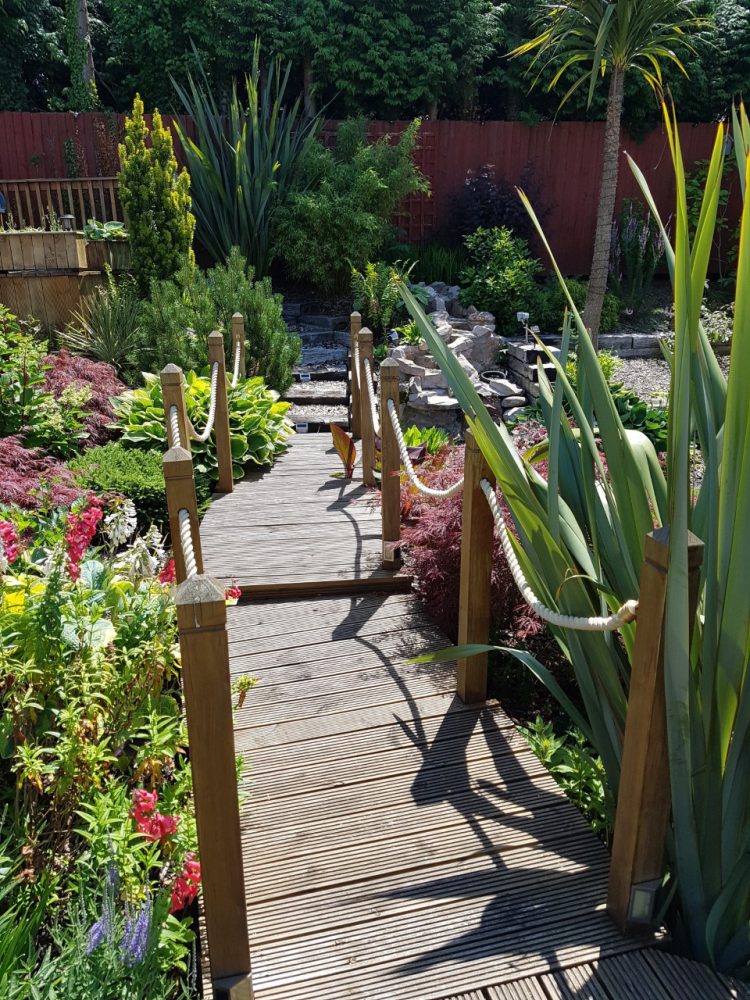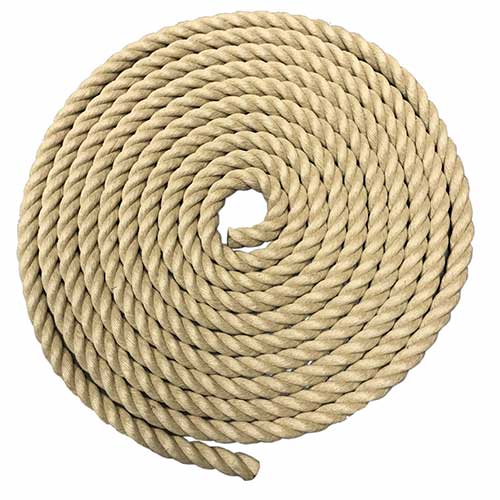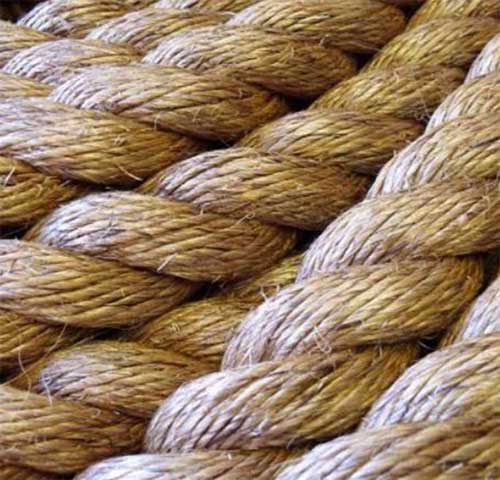Need some rope for your garden but haven’t a clue where to start? We’ve got plenty of tips…

Is it time to revamp your garden? Decking rope can be a simple yet effective way to make your space all the more homely. It’s a chance to add texture, section off areas in an attractive manner, or even make small spaces appear larger. But how do we find a balance between a rope that will look great, and one that is also suitable for the job?
WHICH ROPE IS BEST FOR DECKING?

In most cases, hardy hemp is your best bet. This natural-looking rope is in fact made of polypropylene, meaning it’s a sturdy, durable product that blends nicely into your garden.
Key features:
- strong
- resilient in harsh weather
- UV resistant
- won’t rot, shrink, or snap, unlike natural alternatives
- looks and feels like a natural rope
- floats
- easy to splice
- smooth and doesn’t splinter
Our decking rope is available in sizes of 16mm to 36mm, so you can get the perfect size for your garden. Don’t know which one to go for? 24mm is one of our most popular sizes so we recommend using this as a guideline.
It’s important to remember that our hardy hemp is stored in tightly packed coils in our warehouse. When the coils are opened and we start using the rope, it relaxes. This means that a 24mm rope (for example) could expand by a millimetre or two by the time you get it. Bear this in mind if you want to feed your decking rope through any holes in your decking posts. We suggest a hole at least 5mm bigger than the rope’s diameter. From experience, a 28mm rope won’t go through a 32mm hole!
If you’re buying cup ends, brackets or hooks for your rope, just order the size that matches your rope. The fittings are all slightly larger to allow for the rope to swell slightly. We do recommend that you fit the fittings as soon as you receive your rope, as rope that has been in storage for a while will continue to swell.
If you’re unsure though, we can always send you some samples. Just get in touch and we’ll get back to you as soon as possible.

While most people go for hardy hemp, manila rope can also be used for decking. Hardy hemp is synthetic, but manila is completely natural, meaning it’s more eco-friendly and biodegradable.
Many people like manila because its rustic appearance blends nicely into their garden. It shares its name with the capital city of the Philippines because this is where the abacá trees grow and the rope is made from their leaves. They give the rope its dark brown colouring and rough texture.
But while manila looks great, it will degrade over time (usually lasts around five years). It’s also unreliable when being used outside, as manila shrinks when it’s wet and without pre-treating can shrink between 10 and 20% initially. While it’s generally a cheap rope to replace, this can add unnecessary maintenance to your garden. So, while manila may have the aesthetic you’re looking for, hardy hemp is often favoured due to its durability.
Key features:
- made from natural materials
- easy to splice
- rustic appearance – great for decoration
- resistant to salt-water damage
- holds knots well – will tighten as rope shrinks when wet
WHAT ELSE DO I NEED?
It’s worth taking a moment to plan how you’re going to display your rope or fix it in place. Perhaps it’s simply going to wrap around a fence, or maybe you need some fittings attached.
Ropelocker supply various fittings for decking rope, from hooks to cup ends. You can either order them separately to your rope, or we can attach them for you. Just send us a message if you’d like us to fit them for you, as we’ll need to discuss details with you first such as how much droop you need and how to work out all your measurements.


Brackets are a tidy way to attach your rope to fencing or other fixtures. Typically, a soft eye (shown in left image) is spliced into the end of the rope. This is a secure attachment which still allows movement. Bear in mind, however, that the bigger the rope the chunkier the eye will be.


Rope cups are another popular choice for fixing up decking rope. The cups are secured in place with a screw which is drilled through the rope. The screw is hidden under the cup so the finished look is very clean.
Remember, the cups can’t be moved or adjusted once they’ve been screwed into place, which means your measurements need to be as precise as possible. If you’re not sure where you need to place them, we recommend ordering your rope and cups separately, so you can fit them yourself once your order arrives. Otherwise, we are happy to attach them for you – just give us a message and we’ll take things from there.



Our four-hole ring plates are similar to our brackets, as you can attach them to your rope with an eye (see in first image). Or, rather than placing them at each end, you might want your rope to flow through several ring plates. This is a popular way to hang rope across fencing and is often finished with a man knot (see in bottom left image).



Rope can be an effective way to create a barrier in your garden which isn’t overly imposing. If you’re looking to cordon areas off, you may want a hook attached to the end of your rope. Combine your hook with one of our eye plates for the cleanest finish.

Trigger clips are more secure than just a hook and create a reliable barrier which still allows movement.
A FEW TIPS…
Be generous. When measuring how much rope you need, consider adding a little extra if you’ll have to tie off the ends or wrap rope around fixtures. Also think about whether you want any droop in your rope. (read our blog post about working out droop if you need some help).
Be realistic. You might love the look of a natural rope, like manila, but remember that it will last less time than synthetic alternatives, and risks rotting and losing its shape.
Be adventurous. If you’re taking the time to decorate your own space, make it personal to you and don’t be afraid to get creative.
If you need some inspiration for your garden and decking space, take a look at our Pinterest boards.
